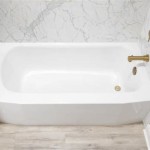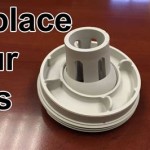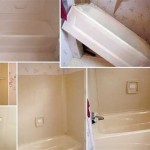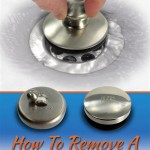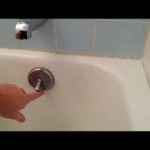Bathtub Handicap Accessories: Considerations for Accessibility and Safety
Accessible bathing is a crucial aspect of independent living for individuals with disabilities or mobility limitations. Bathtubs, traditionally designed for able-bodied users, can present significant challenges. Consequently, a range of handicap accessories have been developed to enhance safety, comfort, and usability. These accessories address various needs, from assisting with entry and exit to providing secure support during bathing. This article explores the types of bathtub handicap accessories available and key considerations for their selection and installation.
Types of Bathtub Handicap Accessories
Numerous accessories cater to specific needs, allowing for customized bathing solutions. Understanding the options available is paramount in selecting the most appropriate aids.
Grab Bars: Grab bars are arguably the most common and essential bathtub handicap accessory. They provide secure handholds for stability and support during transitions, such as getting in and out of the bathtub. They come in various styles, including straight, angled, and flanged versions. The straight bars offer a simple grip and are suitable for general support. Angled bars, often installed near the faucet, provide a more natural grip for pulling oneself up or lowering oneself down. Flanged grab bars offer a wider gripping surface, beneficial for individuals with limited hand strength.
The placement of grab bars is critical. They should be positioned where they provide maximum support during the most challenging movements. For example, a vertical grab bar near the faucet can assist with standing up, while horizontal bars along the side of the tub can aid in maintaining balance while seated. Consider the user's height, reach, and specific needs when determining placement.
Bath Seats and Benches: Bath seats and benches provide a stable and comfortable seating option within the bathtub. They reduce the need to stand for extended periods, minimizing the risk of falls. Different types of bath seats and benches are available, each offering unique features.
Standard bath seats are simple, non-adjustable seats that fit inside the tub. They are ideal for individuals who require a basic seating option. Transfer benches extend beyond the edge of the bathtub, allowing the user to sit down outside the tub and then slide across onto the bench. This is particularly helpful for individuals with limited mobility or those who use wheelchairs. Height-adjustable bath seats and benches allow for customized positioning, ensuring optimal comfort and support. Some models also feature backrests and armrests for additional support and safety.
Handheld Showerheads: Traditional fixed showerheads can be difficult to reach and maneuver for individuals with limited mobility. Handheld showerheads offer greater flexibility and control, allowing the user to direct the water where it is needed. They are particularly useful for washing hard-to-reach areas and for rinsing while seated. Handheld showerheads typically come with a flexible hose and a wall-mounted bracket for easy storage. Some models offer multiple spray settings for a more personalized showering experience.
Bath Lifts: For individuals with significant mobility limitations, bath lifts provide a powered or manual means of safely lowering and raising the user into and out of the bathtub. These devices typically consist of a seat that is lowered into the tub and raised back up using a motor or hydraulic mechanism. Bath lifts can be battery-operated or plug-in, and some models offer reclining features for added comfort.
Installing a bath lift requires careful consideration of the bathtub's dimensions and the user's specific needs. It is crucial to choose a model that is compatible with the existing bathtub and that provides adequate support and safety. Professional installation is generally recommended to ensure proper operation and prevent accidents.
Non-Slip Mats and Treads: Slippery surfaces pose a significant hazard in the bathroom, particularly in the bathtub. Non-slip mats and treads provide added traction, reducing the risk of falls. Non-slip mats are typically placed on the floor of the bathtub, while treads can be applied to the bathtub surface itself. These products are available in various materials, including rubber, silicone, and textured plastic. They are easy to install and can be removed for cleaning.
Faucet Extenders: Reaching the faucet can be challenging for individuals with limited mobility or range of motion. Faucet extenders increase the reach of the faucet, making it easier to turn the water on and off and to adjust the temperature. They are available in various styles and materials, including flexible hoses and rigid extensions. Faucet extenders can be particularly helpful for individuals who use bath seats or benches.
Key Considerations for Selecting Bathtub Handicap Accessories
Choosing the right bathtub handicap accessories involves carefully assessing the user's specific needs, the bathtub's configuration, and the available budget. Several factors should be considered to ensure optimal safety, comfort, and functionality.
Individual Needs and Abilities: The most important consideration is the individual's specific needs and abilities. This includes their level of mobility, strength, balance, and cognitive function. Consider the tasks they struggle with most when bathing. Do they have difficulty getting in and out of the tub? Do they need assistance with washing or rinsing? Do they require extra support to maintain their balance? Understanding these challenges will help determine which accessories are most appropriate.
For example, an individual with limited leg strength may benefit from a bath seat and grab bars, while someone with significant mobility limitations may require a bath lift. An occupational therapist can provide a professional assessment of the individual's needs and recommend specific assistive devices.
Bathtub Configuration and Dimensions: The bathtub's configuration and dimensions will also influence the choice of accessories. Consider the tub's height, width, and depth. Is it a standard bathtub, a walk-in tub, or a shower-tub combination? The available space will determine the size and type of accessories that can be installed.
For instance, a small bathtub may not be suitable for a large bath lift, while a walk-in tub may already have built-in grab bars and a seat. Ensure that the chosen accessories are compatible with the bathtub's dimensions and that they do not obstruct access or create hazards.
Installation and Maintenance: The ease of installation and maintenance is another important consideration. Some accessories, such as grab bars and bath lifts, may require professional installation to ensure proper operation and safety. Others, such as non-slip mats and faucet extenders, can be easily installed without professional assistance.
Consider the user's ability to maintain the accessories. Are they able to clean them regularly and perform any necessary repairs? Choose accessories that are durable, easy to clean, and require minimal maintenance. Regular inspection and maintenance will help ensure that the accessories continue to function properly and provide the necessary support and safety.
Proper Installation and Usage of Bathtub Handicap Accessories
Even the best handicap accessories are ineffective if they are not installed and used properly. Proper installation is critical for ensuring stability, safety, and longevity. Likewise, users must be trained on the correct usage of each accessory to avoid accidents and maximize its benefits.
Professional Installation When Necessary: As previously mentioned, some accessories require professional installation. This is particularly important for grab bars and bath lifts, as improper installation can result in instability and potential injury. A qualified contractor or plumber can ensure that the accessories are securely mounted and that they meet all safety standards.
When installing grab bars, it is essential to anchor them securely to the wall studs. Using drywall anchors alone is not sufficient, as they may not be able to support the weight of the user. It is also important to ensure that the grab bars are installed at the appropriate height and angle for the user's specific needs.
User Training and Education: Once the accessories are installed, it is crucial to provide the user with proper training and education on their correct usage. This includes demonstrating how to use each accessory safely and effectively, as well as providing information on maintenance and troubleshooting. Caregivers should also be trained on how to assist the user in using the accessories.
For example, users should be instructed on how to properly position themselves on a bath seat or bench, how to use grab bars for support, and how to operate a bath lift safely. They should also be taught how to identify and report any potential problems with the accessories.
Regular Inspection and Maintenance: Regular inspection and maintenance are essential for ensuring that the accessories continue to function properly and provide the necessary support and safety. This includes checking for loose screws, cracks, or other damage and cleaning the accessories regularly to prevent the buildup of soap scum and mildew.
Grab bars should be inspected regularly to ensure that they are securely mounted and that there is no corrosion or damage. Bath seats and benches should be cleaned regularly to prevent the growth of bacteria. Bath lifts should be inspected and maintained according to the manufacturer's instructions.
Accessible bathing is a crucial aspect of independent living for individuals with disabilities. By carefully selecting and installing the appropriate bathtub handicap accessories, it is possible to create a safe, comfortable, and accessible bathing environment. This allows individuals to maintain their independence and dignity while reducing the risk of falls and other accidents. Prioritizing safety, comfort, and usability ensures that the bathing experience is positive and empowering.

Find The Best Bathtub Accessories For Seniors And Handicapped Individuals

60 X 32 ½ Ada Bathtub 3 Pieces Left Drain Freedom Shower
Wheelchair Transfer Bathtub 30 X52 Ella S Bubbles Walk In Tubs

Making The Bathtub Accessible For Physically Impaired Doityourself Com
Wheelchair Transfer Bathtub 30 X60 Ella S Bubbles Walk In Tubs

Ergonomic Suction Cup Shower Bathtub Safety Handle Durable Temu

Eagle Health Supplies Tub Mount Sliding Transfer Bench With Swivel Seat 77762

Adjustable Bathtub Grab Bar Universal Clamp On

Stander Wonder Bathtub Pole Lite Bath Safety Rail Tub Grab Bar Handle Clamp Shower And Toilet For Seniors Elderly S White

Fsa Hsa Eligible Vaunn Medical Bathtub Handle Grab Bar And Safety Rails For Seniors Height Adjustable Tub Handles Elderly Disabled Bathroom


